181. THE MORE THE MERRIER, 1943
- Jay Jacobson
- Sep 23
- 18 min read
Hollywood magic at its sweetest

When the world feels heavy, a movie can be a comforting and inexpensive way to lift your spirits, even if only for a short while. So if you ever need a warmhearted carefree escape, I can’t think of a more delightful getaway than “The More the Merrier”. This largely overlooked romantic comedy has it all: irresistible performances by Jean Arthur, Joel McCrea, and Charles Coburn; clever direction by George Stevens; a playfully smart script; and gobs of sparkling movie magic. Nominated for six Oscars (including Best Picture), and winner of one, this is one of the sweetest and most deeply satisfying films I know.

“The More the Merrier” is set in Washington, D.C. amid a housing crisis. Retired millionaire “Benjamin Dingle” arrives in the city to serve as a housing advisor, only to find himself without a place to stay due to a hotel mix-up. He comes upon an ad to sublet half of a sunny apartment, placed by “Constance 'Connie' Milligan”, a young, pragmatic, single working woman who occupies the other half.

“Connie” emphatically informs “Dingle” that she prefers to share her apartment with a woman, but the headstrong “Dingle” finagles his way into getting her to rent it to him. She secretly doesn't mind because she’ll now have someone around to break the silence. “Dingle” can’t understand why “Connie” isn’t married, and feels she needs a “high-type, clean-cut, nice young fellow”. She tells him to mind his own business.

“Connie” didn’t want to room with a man, yet she ends up with two. Because of “Dingle’s” matchmaking instincts, he secretly rents half of his half to the high-type, clean-cut, nice, young “Sergeant Joe Carter”, who’s in town until his next government assignment. As much as “Connie” resists, when they meet, there’s an instant mutual spark.

To complicate matters, “Jeff” shuns marriage and “Connie” is engaged to “Charles J. Pendergast”, a high-ranking government bureaucrat involved in the housing crisis. She and “Pendergast” have been engaged for twenty-two months, which leads “Jeff” to remark "That's a long time for a girl to stick to one guy”, and “Dingle” to respond ”That depends on whether she's engaged to be married or just engaged". Though “Connie” and “Jeff” might not yet know it, “Dingle” is sure “Connie” and “Jeff” are perfect for each other. I’ll let you watch the film to see how things unfold.

Beyond its message of human connection and the importance of helping one another, “The More the Merrier” is a romantic comedy about mustering enough courage to press forward through fear and open oneself to change. As “Dingle” repeatedly says, “Damn the torpedoes, full speed ahead” (a quote from Admiral David Farragut during the Battle of Mobile Bay in the American Civil War). But don't worry, this film hides its depth behind laughs, pratfalls, and charisma, delivering a rom-com that’s as fun as it is charming.
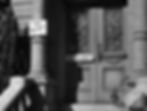
Though timeless, “The More the Merrier” is firmly rooted in its era — set amidst an actual severe US housing crisis at the time due to World War II. Private home construction had stopped with the war, and with a boom in war industries, 20% of the US population moved to cities that offered wartime jobs (shipbuilding, munitions, government jobs, and so on). Between 1940 and 1945, the number of civilians with government jobs in Washington D.C. alone nearly quadrupled. This influx of people to these cities led to overcrowding, and in turn, a shortage of available housing.
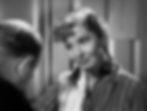
“The More the Merrier” came about because of Jean Arthur’s discontentment under contract to Columbia Pictures. Desperately unhappy with the films she was being assigned by studio head Harry Cohn, she kept refusing roles and being put on suspension. During one of her suspensions, she and her then husband, producer Frank Ross, were in New York City where they reconnected with their friend, writer Garson Kanin.

Arthur was telling Kanin her frustrations, and as quoted in Bob Thomas’ book "King Cohn: The Life and Times of Harry Cohn”, Kanin suggested "I'll write you a script. The next time Cohn sends you a lousy one, tell him you've got one you want to do instead”. In two weeks, Kanin and Robert W. Russell wrote a screenplay tailored for Arthur inspired by the housing shortage in Washington D.C. titled “Two’s a Crowd”. Arthur loved it.

Because Kanin was under exclusive contract to RKO Pictures, he was not allowed to write for anyone else. So he offered the script to Arthur for free, with the caveat that he, Kanin, read the entire script to Cohn. Suspicious, but not one to pass up a free script, Cohn sat through Kanin’s reading of the entire script, reportedly laughing and crying in all the right places. Cohn instantly agreed to make the film.

With additional input by Ross, Russell, Richard Flournoy, and Lewis R. Foster, the script evolved into “The More the Merrier”, and the four earned a Best Screenplay Oscar nomination, with Ross and Russell receiving an additional nomination for Best Original Story. Kanin received no credit for his contributions (due to his RKO contract).

Cohn immediately realized “The More the Merrier” would be great not just for Arthur, but also for director George Stevens, who contractually owed Columbia one more film. A director with a painter’s eye, an actor’s instinct, and a storyteller’s sense of cinema, Stevens excelled at pairing form and feeling to create films that were intimate, funny, and cinematic, and that revealed something about humanity. “The More the Merrier” is no exception.

Notice how brilliantly Stevens lets us know that “Connie” and “Jeff” are meant for each other. Still unaware of one another in the apartment, “Connie” plays rumba music and begins dancing to it alone in her room. Hearing the music through the wall, “Jeff” stops and starts dancing to it alone in the hallway. The moment is playful, charming, and telling.

Later, when “Connie” dances to the same song with “Jeff” in a club, the tune evolves into a symbol of their deepening connection. It marks the moment “Connie" begins to follow her heart, facing the decision between yielding to her instincts or clinging to practicality. This inner conflict is underscored by “Pendergast,” who also hears the melody and tells “Dingle”, “That music, it disturbs me".

Stevens creates strikingly intimate moments, such as the scene between “Connie”, “Jeff”, and a travel bag. After capturing the physical humor in a long shot, Stevens moves in for a medium shot as "Jeff" gets sits beside “Connie”, both inspecting the bag. He then cuts to a close-up highlighting their raw vulnerability, letting us see them silently fall in love. It’s as intimate, tender, and romantic as a film can get.

There’s also perhaps the film’s most famous scene, when “Connie” and “Jeff” walk home together at night. According to McCrea, Stevens instructed him and Arthur to play it as if they don’t want to say goodnight to each other though they must, telling them to improvise. What evolved was that while “Jeff” and “Connie” talk about money, marriage, past girlfriends, and “Pendergast”, McCrea tries to caress Arthur, who is doing her best to resist, though she wants him.

The result is one of cinema’s most erotic, playful, and hilarious sequences. The actors are irresistible, and Stevens hypnotically captures them, from their frisky interplay to a divinely sensuous close-up. In the documentary "George Stevens: A Filmmaker’s Journey", director Frank Capra praised it as “one of the funniest, sexiest scenes I’d ever seen. I think it’s probably the sexiest and the funniest scene I’ve ever seen in any picture”. Stevens' command at evoking passion, tenderness, comedy, and drama earned him a well-deserved Best Director Academy Award nomination for "The More the Merrier".


After rising to prominence directing the poignant 1935 Katharine Hepburn romantic dramedy “Alice Adams”, George Stevens directed nearly a dozen films across various genres before “The More the Merrier”, including notables like “Swing Time”, “Gunga Din”, “Woman of the Year”, and “The Talk of the Town” (also starring Arthur). He became touted a master of heartfelt comedy, with “The More the Merrier” arguably his finest example. This was his final film for Columbia, and shortly after, he joined the U.S. Army Signal Corps during World War II, heading a Special Coverage Unit tasked with filming and documenting key events in the war. His firsthand exposure to the front lines, the wounded, the dead, and concentration camp victims left a permanent emotional scar, and when he returned to Hollywood in 1946, his worldview had dramatically shifted. As Stevens reflected in “George Stevens: A Filmmaker’s Journey”, “Films were much less important to me, and in a way, perhaps, more important”. He never again made pure comedy or light entertainment. Instead, his postwar films focused solely on the human condition, earning him eight additional Academy Award nominations for directing and producing (including two wins), securing his legacy as one of America's greatest filmmakers. You can read more about George Stevens in my previous posts on "A Place in the Sun”, “Giant”, and “Shane”. Click on the titles to explore.

Without a doubt, one of the big joys of “The More the Merrier” is watching Jean Arthur play “Constance ‘Connie’ Milligan”. Highly practical, “Connie” fittingly used to work in the Office of Facts and Figures, and has to think things out carefully before doing anything rather than acting on her desires. As “Dingle” says, “There are two kinds of people — those who don’t do what they want to do so they write down in a diary about what they haven’t done, and those who are too busy to write about it because they’re out doing it”.“Connie” keeps a diary.


Arthur’s wealth of personality, vulnerability, and quirkiness make us forget she’s acting. She is “Connie”. It’s quite a skill, and Arthur does it in every scene, as when going over the morning schedule with “Dingle”. Complete with an illustrated floor plan, “Connie” earnestly tells him: “My alarm goes off at seven o’clock when we both get up. At 7.01, I enter the bathroom, then you go down to get the milk, and by 7:05, you’ve started the coffee. One minute later, I leave the bathroom and a minute after that you enter the bathroom. Now that's when I'm starting to dress. Three minutes later I'm having my coffee, and a minute after that, at 7:12, you leave the bathroom...". You get the picture. But what you can’t get from my description is Arthur’s unparalleled genuineness, deadpan seriousness, and remarkable comedic skill, bringing such droll dialogue riotously to life.

Arthur brings the same thrilling realism and unforced comedy when coyly checking out “Jeff” over breakfast and asking, “What are you gawking at?”, fuming when “Dingle” reads her diary, or doing her best to resist “Jeff” on their walk home. I’m truly in awe of Arthur’s performance every time I watch it. It's as moving, real, and funny as acting can get and stands as one of the great comedy performances in cinema, deservedly earning her a Best Actress Academy Award nomination (she should have won). As actor James Stewart said in John Oller’s book “Jean Arthur: The Actress Nobody Knew”, Arthur was “the finest actress I ever worked with. No one had her humor, her timing”.


After watching stars in film after film, we feel we know them, yet many were nothing like their screen personas. That was especially true of Arthur, whose effortless onscreen confidence and charm vanished when the cameras stopped. One of the most secretive actors in Hollywood history (not much about her personal life is or was known), she hated attention, was plagued with major anxiety, scared of strangers, had a crippling insecurity, and a pathological shyness. As Capra (who directed Arthur in three films and made her a star) recalled his autobiography: "Jean Arthur is my favorite actress. Probably because she was unique. Never have I seen a performer plagued with such a chronic case of stage jitters. I'm sure she vomited before and after every scene. When the cameras stopped she'd run headlong to her dressing room, lock herself in — and cry... It wasn't an act. Those weren't butterflies in her stomach. They were wasps. But push that neurotic girl forcibly, but gently, in front of the camera and turn on the lights — and that whining mop would magically blossom into a warm, lovely, poised, and confident actress... The scene over, back she'd rush to her dressing room to vomit”.


Arthur’s insecurities led her to reject roles she disliked, claiming the mere thought of playing them made her ill. She included a clause in her contract to have no obligation to do publicity, which angered the press, and in 1944, the Women’s Press Club awarded her the Sour Apple as filmdom’s least cooperative actress. Her acute shyness, doubts, and inferiority complex earned her a reputation (founded or not) as being difficult and temperamental. In Michael Munn’s book “Jimmy Stewart”, Stewart’s wife had this to say: “Because [Arthur] was so insecure, some people have been unkind about her. But she suffered from anxiety — almost a phobia about acting. She was terrified she would mess it all up with one lousy performance and that would be [sic] her career over”. Her friend, actor Roddy McDowell told John Oller: “It’s very difficult to talk about Jean because lots of the words one uses sound derogatory and they’re not. She was an original — I keep coming back to that word — and the emotions that she exhibited made one feel, even when she was functioning at her best, that she wouldn’t be able to function the next day because she was this strange individual… And I’m sure that as a young girl she was made enormous fun of and was made to feel like a freak”.


Arthur was famous for her voice, which had an unpredictable rhythm and flow. It would crack, sound childlike, confident, nervous, husky, high-pitched, low, smooth, and harsh all at the same time, while the words it spoke always rang true. Her unique voice, knack for physicality, and complete emotional honesty made her Columbia Pictures’ top star from 1936 through the mid 1940’s (when she left the studio), and one of Hollywood’s biggest names. Because she made acting look invisible, and mostly appeared in comedies, her tremendous acting skill rarely receives the acknowledgement it deserves. Being an actor myself, I can assure you that Arthur is one of the finest in the profession, with work that consistently carries the two most important aspects that make great acting — emotional truth and the ability to listen (she’s quite possibly the screen’s best listener — watch how she listens to “Connie’s” inner thoughts or to her costars). This film offered her one of her greatest roles, and in turn she gave one of her greatest performances. If you want to know Jean Arthur, this is the film to watch. For anyone who has ever felt incapable or paralyzed by fear, let Arthur’s dazzling body of work serve as a reminder that even the most overwhelmed among us can, at times, find the strength to push through. You can read more about the life and career of Jean Arthur in my posts “You Can’t Take It with You”, “Shane”, and “Mr. Smith Goes to Washington”.


Perfectly matched with Arthur in “The More the Merrier” is Joel McCrea as “Joe Carter”, “Connie’s” roommate and eventual love interest. Few can play a steadfast, sincere, levelheaded, dignified, strapping, All-American guy as convincing as McCrea. His restraint and naturalness are perfectly suited for comedy, and his offhand deadpan deliveries make this film especially fun to watch.

Take for instance, "Joe's" exchange with “Dingle” when they first meet:
“Dingle”: “What’s your name?”
“Joe”: “‘Carter’.”
“Dingle”: “‘Bill Carter’?”
“Joe”: “‘Joe Carter’.”
“Dingle”: “I used to know a fellow named ‘Bill Carter’.”
“Joe”: “Wasn’t me.”
“Dingle”: “Don’t you suppose I know that?”
“Joe”: “What ya ask for then?”
“Dingle”: “Because I know what ‘Bill Carter’ looked like.”
“Joe”: “Not like me.”
“Dingle”: “Oh, then you know ‘Bill Carter’.”
“Joe”: “No I don’t, but he sounds like a great guy.”
The dryly understated way with which McCrea handles his lines make the scene hysterical.

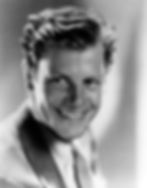
McCrea’s reactions are priceless, such as his confusion in the shower as he first hears “Connie’s” voice, the way he drinks in “Connie” when he finally sees her, or his grave disappointment when he hears a knock at the door, fearing it’s “Pendergast”. His tender moments with “Connie”, such as in the travel bag scene or the walk at night, are so heartfelt and delicate that we can’t help but fall for him and want “Connie” to do the same. And when he says “I love you ‘Connie’”, McCrea delivers such unfettered honesty and conviction, it’s overwhelmingly moving. A truly beautiful moment. McCrea has his own brand of gentle, awkward charm which sparks an electricity with Arthur. Their passionate and wholly convincing chemistry of desire and longing make this film highly romantic and very touching. McCrea’s entire performance is an enormous factor as to why “The More the Merrier” is one of the sweetest and most tender films I’ve ever seen.

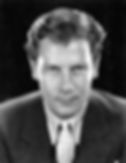
Joel McCrea began appearing in movies in 1927, landing his first substantial role in 1929's "The Jazz Age", More small parts followed (including Greta Garbo’s brother in “The Single Standard”), before his break with 1930’s “The Silver Horde" (also featuring an up-and-coming Arthur), and by 1932, he was starring in films such as the scandalous "Bird of Paradise" and the pre-Code horror film "The Most Dangerous Game”. One of the most popular leading men of the 1930s, he appeared alongside many of Hollywood’s top female stars, including Miriam Hopkins, Barbara Stanwyck, Merle Oberon, Constance Bennett, Irene Dunne and Arthur (in 1936's "Adventure in Manhattan”), becoming especially known for romantic comedies. In the 1940s, he found even greater stardom, jumpstarted with films like “Primrose Path”, and the lead in Alfred Hitchcock’s “Foreign Correspondent”, both in 1940. Just after the US entered WWII, McCrea wanted to take a break from movies and stay on his ranch. But Arthur wanted him for “The More the Merrier”, as did Stevens, and, as McCrea recalled in “George Stevens: A Filmmaker’s Journey”: “I saw what a regular guy [Stevens] was. He was a terrific and a very original, interesting man, and I said ‘I want to do the picture’... So we did and we had the greatest time”.
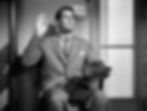

“The More the Merrier” was a big success, and McCrea was now in a position to call his own shots. So in 1946, he decided to exclusively make Westerns (with two exceptions) for the rest of his movie career. The grandson of a stagecoach driver, McCrea was born in California and basically grew up around horses. As he famously said in a 1978 interview, “I always felt so much more comfortable in the Western. The minute I got a horse and a hat and a pair of boots on, I felt easier. I didn’t feel like I was an actor anymore. I felt like I was the guy out there doing it”. He appeared in approximately thirty Westerns over the next thirty years and became one of the great stars of that genre. You can read more about the life and career of Joel McCrea in my posts on “Sullivan’s Travel’s” and “The Palm Beach Story”. Please check them out.
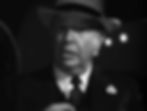

The third star of “The More the Merrier” is Charles Coburn, who is phenomenal as “Benjamin Dingle”, the mischievous retired millionaire. Coburn effortlessly fuses a playfully roguish and imposing disposition with a warm and friendly edge, making “Dingle” utterly likable, even lovable. That’s a major accomplishment, for “Dingle” sometimes crosses the line (as when reading “Connie’s” diary), but you still don’t hate him. Watch how masterfully Coburn plays the scene trying to rent the apartment from “Connie”. “Dingle” is pushy with half-logical reasoning, yet Coburn injects so much humor and heart that when he says "Aw, let me stay”, you can’t help but want him to have the room. It's another of the film’s outstandingly subdued performance, letting the comedy speak for itself. Coburn's immensely funny and touching performance won him a Best Supporting Actor Academy Award — the film’s only Oscar win.


Charles Coburn was a rare breed of film actor who began in movies while in his late 50s and quickly became a household name, sometimes star of the movie, who occasionally had his name above the title (as in “The More the Merrier”). In essence, he was a character actor movie star, which was not common during the Studio Era. Coburn appeared in about seventy movies in just under thirty years, often as a crusty, authoritative figure with a soft spot inside. Very talented at drama, with a true gift for comedy, he earned two additional Best Supporting Actor Oscar nominations for 1941's "The Devil and Miss Jones" (also starring Arthur), and 1946's "The Green Years".


Like Arthur, Charles Coburn was quite different from his kindhearted, lovable screen curmudgeon. Born in Macon, Georgia, in 1877, he grew up under the shadow of the Confederacy, which undoubtedly shaped aspects of his worldview, for he later became a member of the white supremacist organization White Citizens’ Councils, opposing racial integration. He was also vice president of the Motion Picture Alliance for the Preservation of American Ideals, a group founded in 1944 to protect Hollywood from what it said was a communist and fascist influence, that helped create the Hollywood blacklist and frequently supplied friendly witnesses to the House Un-American Activities Committee (you can read more about the blacklist in my post on “High Noon”). Very sad that an actor who could bring such joy from his performances could harm so many lives. You can read a bit more about Charles Coburn in my post on “Gentlemen Prefer Blondes”.

Richard Gaines plays “Charles J. Pendergast”, a government official and “Connie’s” eternal fiancé. It’s not a large part, but Gaines makes quite an impression, letting us instantly know how stiff, fussy, and uncomfortable “Pendergast” is, outside of work. He stands in ideal contrast to “Connie”, “Jeff”, and “Dingle”, supplying humor each time he appears.


Born in Indian Territory (now Oklahoma) and raised in Texas, Richard Gaines studied drama in college, acted in regional theaters around Texas, made his way to New York City, and his Broadway debut in a 1929 production of "S. S. Glencairn". In 1939, he replaced Raymond Massey in the title role of the original Broadway production of "Abe Lincoln in Illinois”, which ultimately led him to Hollywood. His film debut was as Patrick Henry in the 1940 film "The Howards of Virginia” opposite Cary Grant, which began a steady film and TV career, mostly in supporting roles as authoritative, historical, professional, or father figures in over forty movies. "The More the Merrier" was his third film, and his others include "Brute Force", "Humoresque", "Nobody Lives Forever", "Ace in the Hole", "Love Me or Leave Me", "Ransom!", and as the insurance company boss in "Double Indemnity". His thirty-five plus TV show appearances include playing a judge on fourteen episodes of "Perry Mason”. In 1962 he retired and became an acting teacher. He was briefly married once. Richard Gaines died in 1975 at the age of 70.

Stanley Clements plays “Morton Rodakiewicz”, “Connie’s” young neighbor who can’t decide if he should join the Boy Scouts or not. An innocent boy trying to do good, he unknowingly messes everything up. It’s a fun role that Clements makes the most of, delivering rapid-fire dialogue and giggling after he does his first good deed of the day.
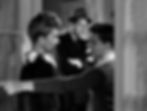

New York City–born Stanley Clements began his career in vaudeville and radio before signing with 20th Century Fox in 1941 at age fifteen. Starting in B movies, his screen debut was in 1941’s “Tall, Dark and Handsome”, and he soon appeared as one of the kids in several of the “East Side Kids” films. After more B movies, he appeared in A films, including “The More the Merrier”, “Cover Girl”, “Sweet Rosie O’Grady”, and as a tough street kid in the Best Picture winner “Going My Way”. Clements worked steadily in mostly small roles, in films like “The Babe Ruth Story”, “Johnny Holiday”, "Salty O’Rourke”, and “Destination Murder”. In the 1950s, he co-starred as ringleader “Stanislaus ‘Duke’ Coveleskie” in seven "The Bowery Boys” films, a role for which he is perhaps best remembered. By 1978, he amassed 122 credits, including the films “It’s a Mad, Mad, Mad, Mad World”, “Panic in the City”, and his final, “Hot Lead and Cold Feet”, and TV shows like “Gunsmoke”, “Police Woman”, “Get Smart”, and “Leave It to Beaver”. He was married twice, his first being to actress Gloria Grahame, who divorced him and married director Nicholas Ray just five hours later. Stanley Clements died in 1981 at the age of 55.


A quick nod to Grady Sutton, who briefly appears as a diner waiter. A prolific character actor with nearly 250 film and television credits, Sutton is instantly recognizable for his Southern drawl, large build, and delightfully dimwitted demeanor. Born in Tennessee, his college boyfriend was the brother of film director William A. Seiter. This connection led Sutton to Hollywood, where he began working in Seiter’s films, starting with a bit part in the 1925 short “The Mad Whirl”. He also had a bit part in Harold Lloyd’s classic “The Freshman”. By 1929, Sutton was appearing in as many as sixteen films a year, typically in small but memorable roles. He worked with W.C. Fields in four films (including “The Bank Dick” and “The Man on the Flying Trapeze”), and his résumé spans titles such as “Alice Adams”, “White Christmas”, “A Star is Born”, “Anchors Aweigh”, “Cover Girl”, “Ziegfeld Follies”, “The Story of Temple Drake”, “My Fair Lady”, “Myra Breckinridge”, and two films already on this blog, “My Man Godfrey” and “Stage Door”. Sutton did not come out as gay until late in his career. Because of his effeminate manner and the Production Code’s ban on depictions of homosexuality in American films (see my post on “Red Dust” for more on that), he was frequently typecast as a naive, effeminate, sexless country bumpkin — a persona he enlivened with impeccable comic timing. He retired after appearing in 1979’s “Rock ’n’ Roll High School”. Grady Sutton died in 1995 at the age of 89.

In addition to Coburn’s Best Supporting Actor Oscar win, and nominations for Best Director, Best Actress, Best Screenplay, and Best Original Story, “The More the Merrier” was also nominated for a Best Picture Oscar (losing to “Casablanca”).
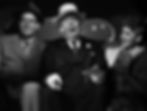
As mentioned before, “The More the Merrier” was made in the midst of World War II while the US was at war with Japan. So be forewarned that the slur “Jap” is used twice in the movie.
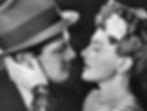
Sweet, uplifting, and irresistibly charming, this week’s pick is a hidden classic that’s as heartwarming as it is satisfying. It's a movie I really love. Enjoy “The More the Merrier”!
This blog is a (currently triweekly) series exploring classic films from the silent era through the 1970s. Each post recommends a film to watch, aiming to entertain, inform, and deepen your appreciation of cinema — its stars, directors, writers, the studio system, and more. Be sure to visit the HOME page to learn more, subscribe for email updates, and check out THE MOVIES page for a full list of films. Please comment, share with others, and subscribe so you never miss a post. Thanks for reading!
YOU CAN STREAM OR BUY THE FILM ON AMAZON:
OTHER PLACES YOU CAN BUY THE FILM:
As an Amazon Associate I earn from qualifying purchases, and any and all money will go towards the fees for this blog. Thanks!!




